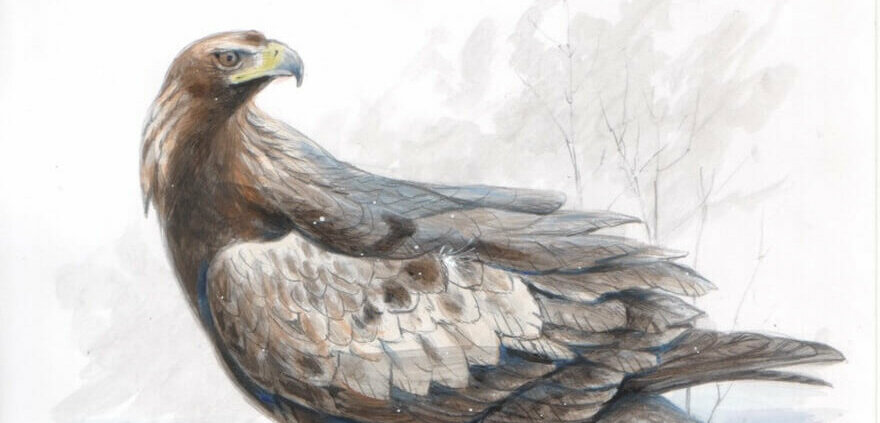A Small Piece Of Lead
Story and image by Doug Pifer
A young bald eagle, grounded and unable to stand up, was brought to Blue Ridge Wildlife Center in Boyce for treatment. Lab tests revealed high levels of lead in the bird’s blood, and unfortunately, this eagle did not survive.
Blue Ridge Wildlife Center treats many eagles each year. Most of them are victims of some kind of trauma — collisions with vehicles being the main suspect. However, the Center also finds that more and more rescued eagles show low levels of lead in their systems. The presence of lead, according to the Center, can slow an eagle’s reaction time, making it more prone to life-
threatening situations.
Subsequent tests revealed this young eagle had 27 micrograms of lead per deciliter in its blood. The normal amount of lead in a healthy animal’s blood is zero. And one lead fragment the size of a grain of rice is enough to kill an eagle.
How does lead enter an eagle’s body? Gut piles left in the woods by deer hunters are a major source. When a hunter shoots a deer, they remove the internal organs. Some hunters bury the offal but most people leave the gut pile in the woods, knowing that it will soon be cleaned up by animals. Since prehistory, hunters have done this, and it’s a great example of recycling.
Eagles, hawks, bobcats, raccoons, foxes — many animals people think of as predators — gather at gut piles. Even songbirds like chickadees appear when a hunter or another predator kills a deer. Everybody loves a free meal.
Years ago, I watched a fellow who hunted on the property where we lived shoot a deer in the middle of the field behind our house. He field dressed it on the spot before loading it into his truck. This happened late one December afternoon and it snowed overnight. Next morning, five or six turkey vultures stood around the gut pile. One picked at the entrails while others stood in the snow, neck feathers fluffed around their bare heads like hooded messengers of death. Through their midst walked several crows, seizing and fighting over bits of food.
As more vultures arrived, I set up my spotting scope at the window, got my sketchbook, and spent the morning watching various visitors come and go. By mid-afternoon the gut pile was gone and my sketchbook contained drawings of vultures, crows, a raven, a red-tailed hawk and a pair of red foxes. Later I wrote a story titled,
“Gut Pile Party.”
When a hunter shoots a deer, the soft lead bullet bursts into small fragments upon impact. Tests and x-rays show tiny pieces of lead that penetrate the flesh as far as 18 inches from the entry point. Even if the bullet pierces its heart or lungs, a deer is small enough that fragments can spread into internal fat, stomach and intestines, which when discarded are consumed by
scavenging animals.
If a fox, vulture, or eagle eats meat containing lead fragments, its stomach breaks down the lead and its blood carries it throughout the body, causing neurological problems and organ failure. According to Blue Ridge Wildlife Center, “While most hunters trim some distance from the entry wound, many don’t realize just how much meat has been contaminated, both for themselves when they consume this meat later, but also for the wildlife they leave to scavenge the gut piles.”
Solving the problem of lead poisoning in wildlife includes the use of non-toxic ammunition. Many state and federal wildlife management areas throughout the country have required waterfowl hunters to use non-toxic steel shot in their shotguns since the 1970s. Much research has gone into the manufacturing of non-toxic ammunition for big game animals, too. Several organizations have conducted ballistic studies and research on the use of copper bullets.
For more information and availability of non-lead ammunition, see huntingwithnonlead.org.










